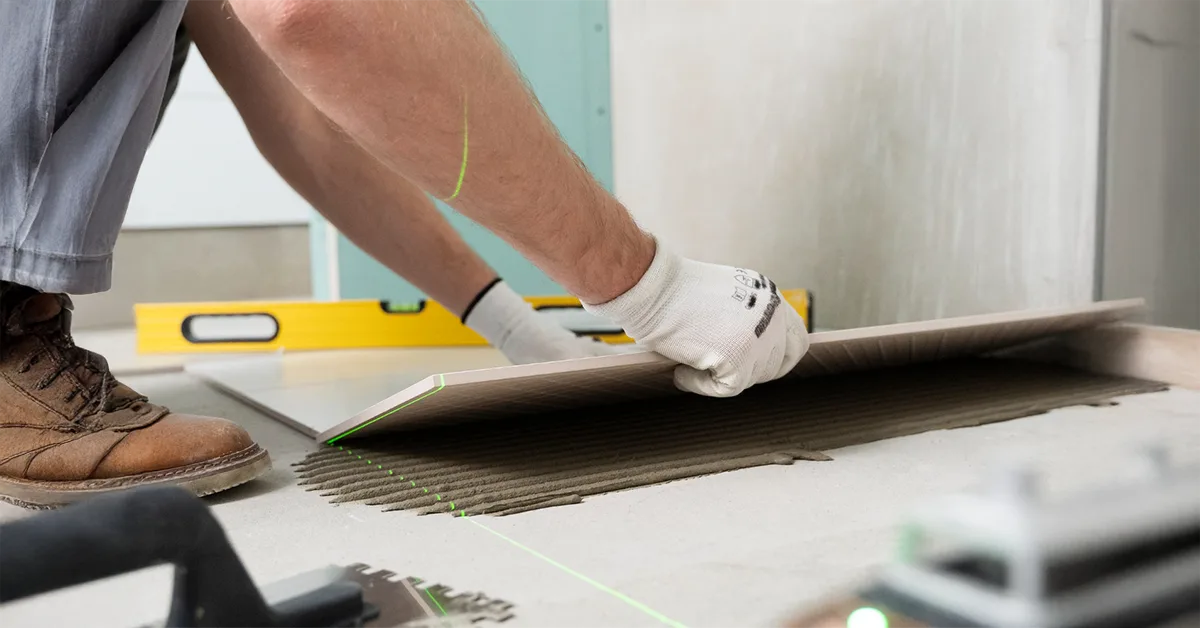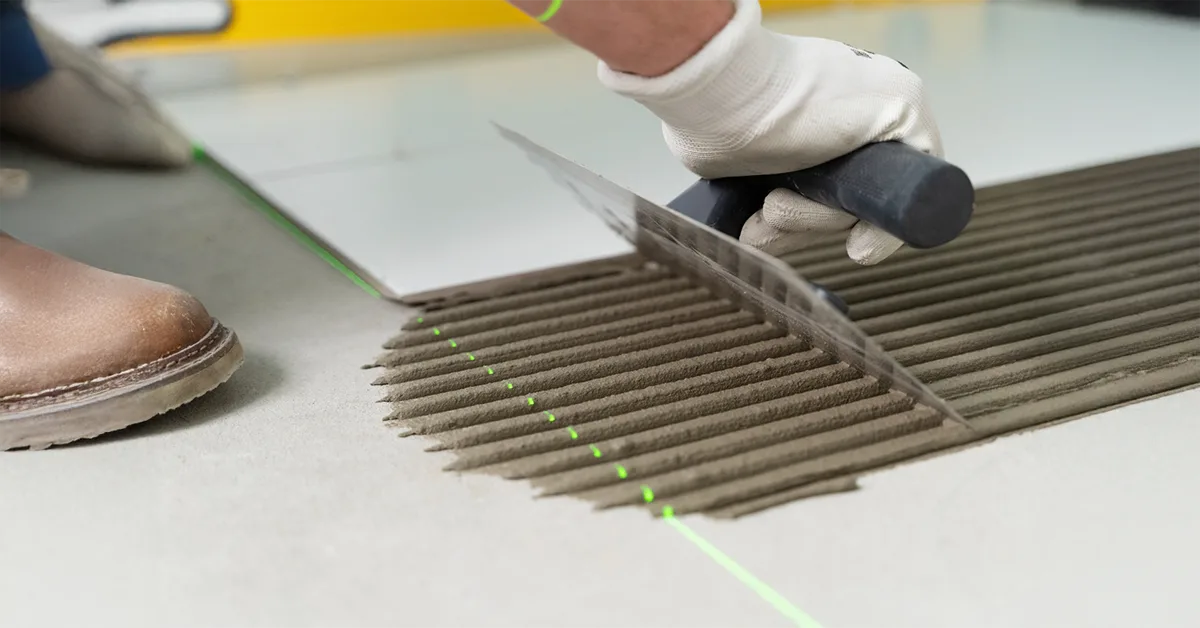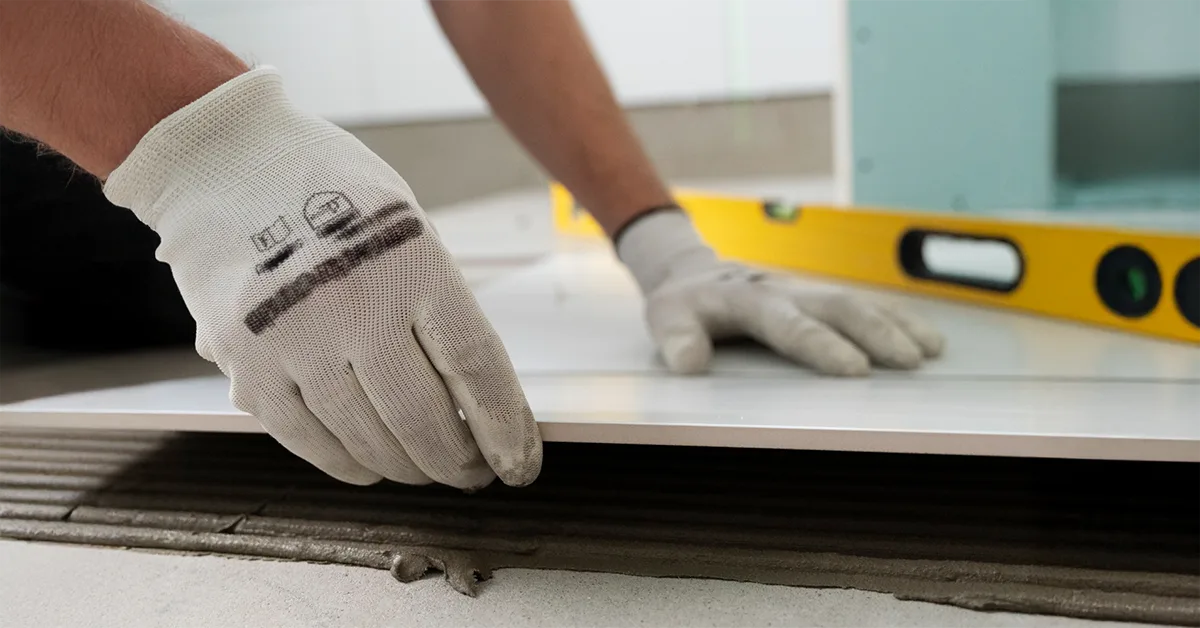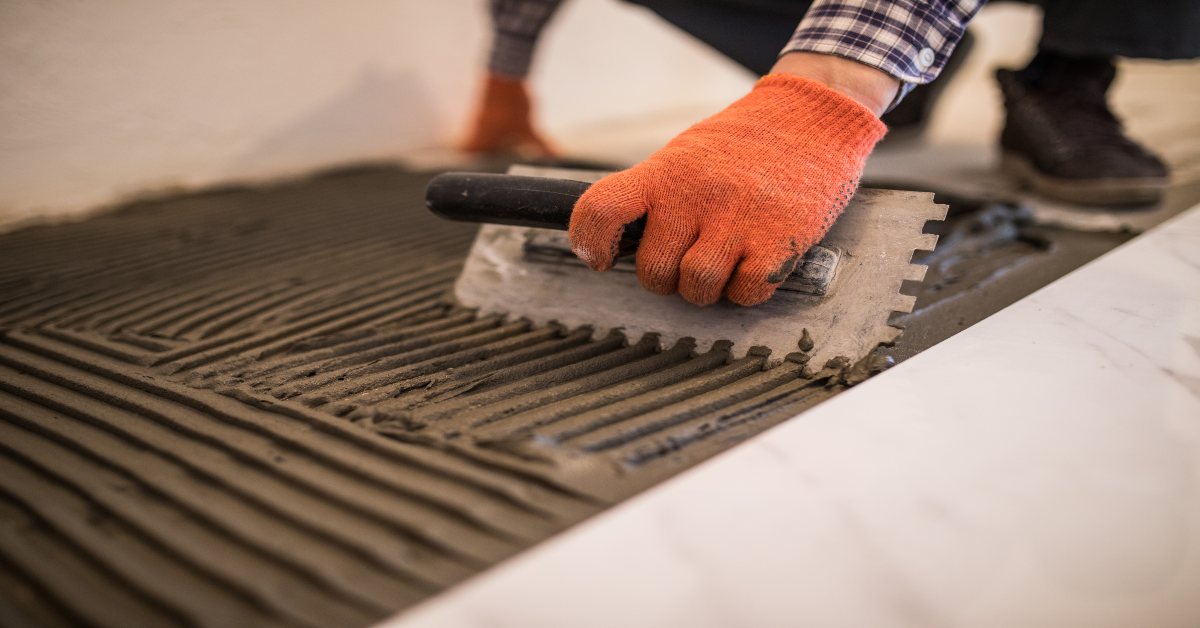Elevate Your Tiling Projects with RachTR: The Ultimate Guide to Tile Adhesives
Updated : 5 months ago

On most construction sites, what gets noticed are the finishing touches, the polished tiles, the precise alignment, the final sheen that reflects good craftsmanship.
But the real test of quality often lies beneath the surface. And few materials are as quietly critical to that success as the tile adhesive.
It’s rarely the first thing discussed. Yet, it’s often the first thing to fail if chosen wrong. Between a tile job that holds for decades and one that starts popping in monsoon, the tile fixing adhesive is the difference.
So here’s a practical guide. Whether you’re an architect defining specs, a contractor managing margins, or someone simply trying to avoid callbacks, this is for you.

Why Tile Adhesives Are Reshaping the Way We Build
For years, cement-sand mortar was the trusted ally of tile installations. It worked, mostly. But as buildings got taller, environments more demanding, and aesthetics more refined, older methods began to show their limitations.
Today’s construction demands more than just basic bonding. It calls for precision, flexibility, and performance, all of which modern tile adhesives are designed to deliver.
Whether it’s a wet bathroom wall or an external façade exposed to sun and wind, tile adhesives are engineered to work with the structure, not against it.
What Makes Adhesives a Smarter Choice?
Here’s what architects and contractors are choosing them for:
Stronger, Uniform Bonding No more hollowness or loose tiles. Tile adhesives create an even grip, unlike patchy cement bonding.
Flexibility That Adapts Structures expand. Contract. Settle. The right adhesive on tiles flexes along, -and keeps things intact.
Moisture Resistance Wet zones like kitchens, balconies, and washrooms demand more. Many tile adhesives are designed to withstand prolonged exposure to water without compromising strength.
Faster Application Time matters on site. Adhesives come ready to apply, with predictable setting times, helping you plan better and complete faster.
Made for Modern Tiles Natural stone, vitrified tiles, large formats, modern surfaces require adhesives that can match their density and behavior.
Your Checklist Before Choosing a Right Tile Adhesive
Every project whispers its own conditions. But here are four non-negotiables that help in selecting the right adhesive:
Type of Tile:
Heavier, denser tiles = higher strength adhesives. Lightweight decorative = flexible, ready-mix options.
Surface/Substrate:
Concrete slab? Drywall? Or fixing tiles over tiles? Compatibility here can make or break the bond.
Environment:
High moisture, temperature changes, foot traffic, all affect performance expectations.
Timelines:
Tight turnarounds may call for quick-setting variants, while others allow for phased curing.
A Quick Look at RachTR’s Adhesive Solutions
Every RachTR adhesive starts with a simple question: Will it stand the test of time? Here’s how we answer that on the ground.
Cement-Based Adhesives
Built for durability in high-footfall zones. Long-lasting grip and high tensile strength.
Best for: Bathrooms, balconies, parking areas, high-traffic flooring.
Ready-Mix Adhesives
Convenience-driven, especially useful in small interior projects. These adhesives reduce preparation time while maintaining performance.
Best for: Kitchen backsplashes, internal walls, decorative tile applications.
Epoxy-Based Adhesives
For environments where heat, moisture, or chemicals are in play. These adhesives create a tough, lasting bond under the most demanding conditions.
Best for: Industrial kitchens, commercial washrooms, pools, pharma labs.

On-Site Realities That Often Get Overlooked
Even the best tile can fail if adhesive selection isn’t aligned to real conditions. Here are a few learnings from our field teams:
Surface Prep Isn’t Optional
Every “flat” surface isn’t really flat. Adhesive bonds best on clean, even bases. Dust, moisture, even a leftover coating layer can sabotage the entire effort.
Heavy Tiles Need Stronger Adhesives
Natural stone and large-format tiles require adhesives with higher tensile strength. Using standard adhesive can result in sagging, detachment, or long-term discoloration.
Temperature Plays Its Part
Tiles expand. Adhesives crack. Unless they’re flexible enough to stretch under pressure, especially in coastal or high-temperature regions.
Logistics Matter More Than You Think
Using adhesive with a short pot life? Don’t schedule it on a humid day. Plan storage. Plan prep. Or risk wasting half the batch.
What Sets RachTR Apart (Quietly, But Surely)
We’ve been part of projects where every millimeter mattered, hospital corridors that couldn’t afford downtime, swimming pools with aggressive timelines, or outdoor cladding facing 40°C heat swings.
In every case, it wasn’t just about the product. It was about understanding the setting, selecting the right adhesive, and supporting the team on ground.
And that’s what we’re quietly committed to, helping projects succeed from the inside out, without fanfare.
Tiles get noticed. But the adhesive on tiles? That’s what determines whether they last a season or a decade. Invisible? Yes. But non-negotiable? Absolutely.
Because at the end of the day, you’re not just fixing tiles. You’re building trust, in the floor, in the finish, in your work.
Want to Go Deeper?
Whether you’re planning a multi-floor commercial project or a detailed residential renovation, our team can help you pick the adhesive system best suited for your project’s substrate, tile type, and usage pattern.
📩 Reach out at Rachtr
60 views
60
0 comments
0





.jpg)






Comments